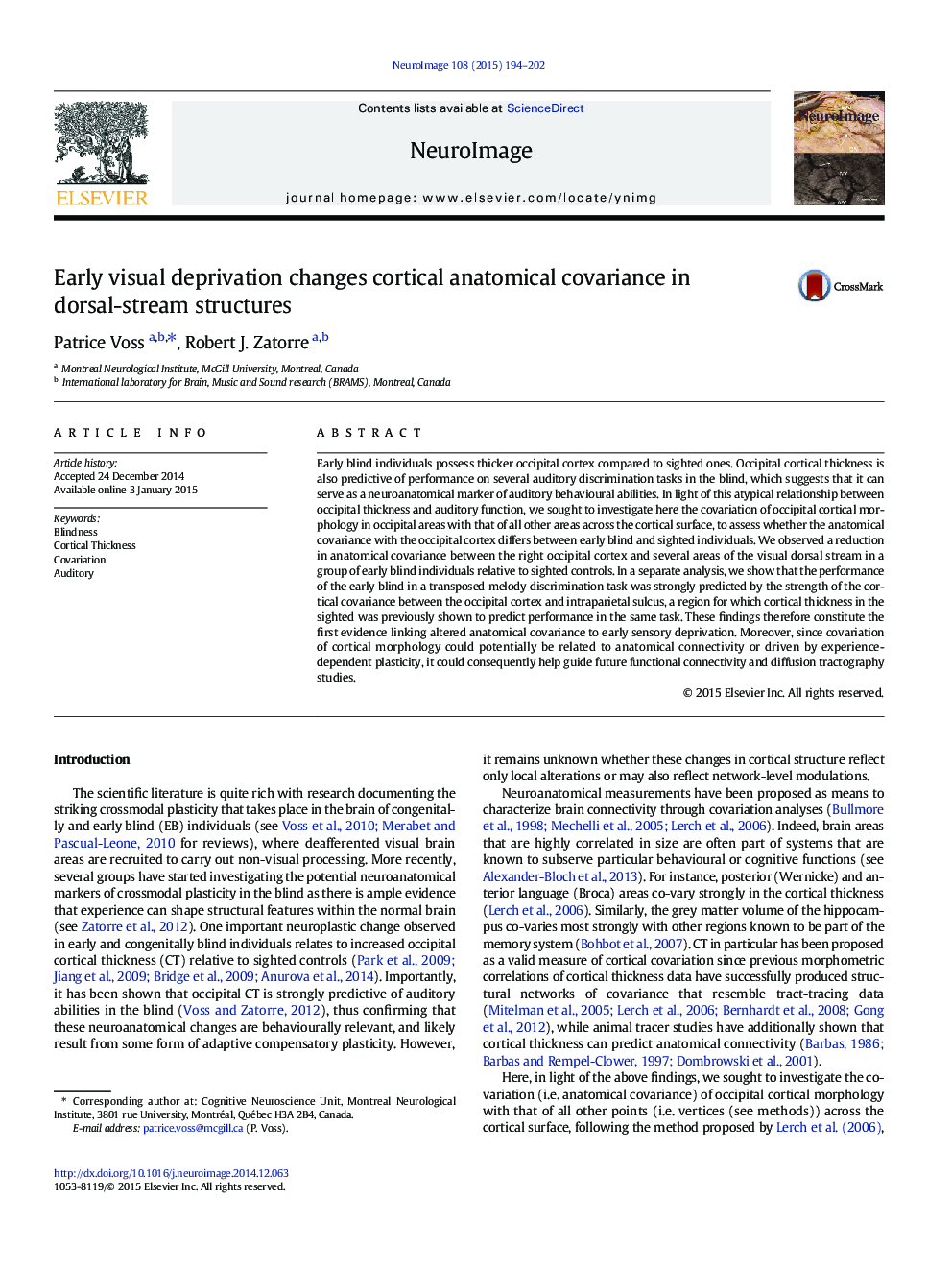| Article ID | Journal | Published Year | Pages | File Type |
|---|---|---|---|---|
| 6025875 | NeuroImage | 2015 | 9 Pages |
Abstract
Early blind individuals possess thicker occipital cortex compared to sighted ones. Occipital cortical thickness is also predictive of performance on several auditory discrimination tasks in the blind, which suggests that it can serve as a neuroanatomical marker of auditory behavioural abilities. In light of this atypical relationship between occipital thickness and auditory function, we sought to investigate here the covariation of occipital cortical morphology in occipital areas with that of all other areas across the cortical surface, to assess whether the anatomical covariance with the occipital cortex differs between early blind and sighted individuals. We observed a reduction in anatomical covariance between the right occipital cortex and several areas of the visual dorsal stream in a group of early blind individuals relative to sighted controls. In a separate analysis, we show that the performance of the early blind in a transposed melody discrimination task was strongly predicted by the strength of the cortical covariance between the occipital cortex and intraparietal sulcus, a region for which cortical thickness in the sighted was previously shown to predict performance in the same task. These findings therefore constitute the first evidence linking altered anatomical covariance to early sensory deprivation. Moreover, since covariation of cortical morphology could potentially be related to anatomical connectivity or driven by experience-dependent plasticity, it could consequently help guide future functional connectivity and diffusion tractography studies.
Related Topics
Life Sciences
Neuroscience
Cognitive Neuroscience
Authors
Patrice Voss, Robert J. Zatorre,
